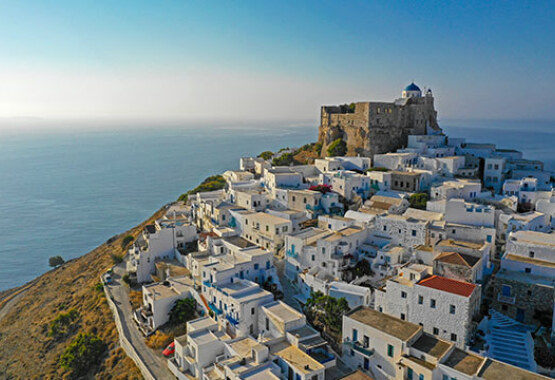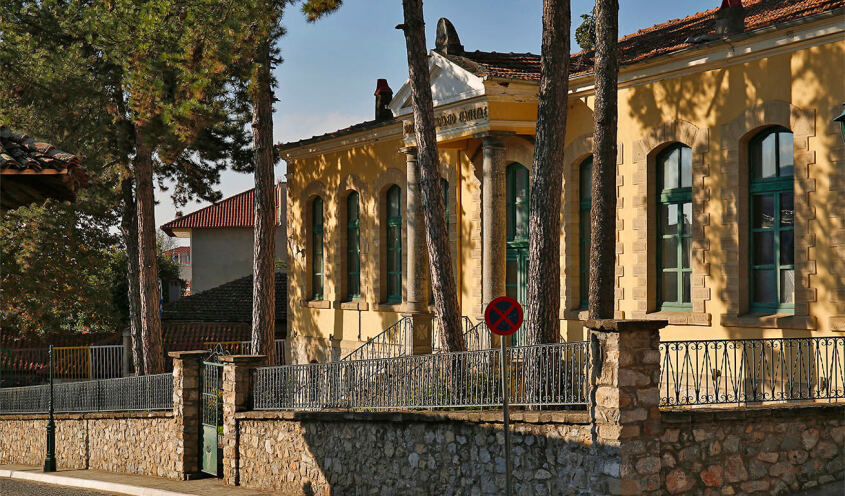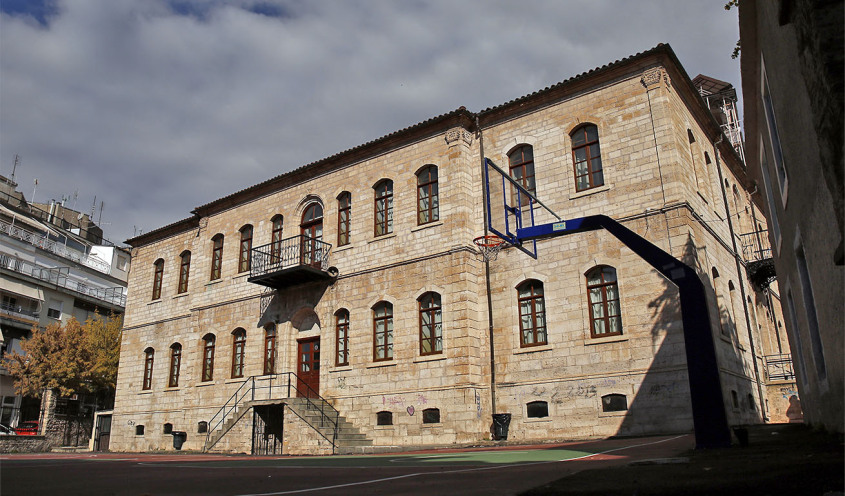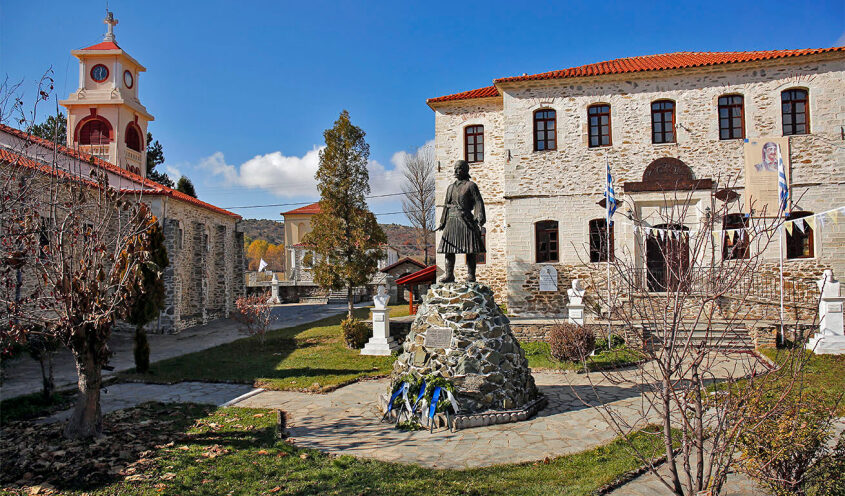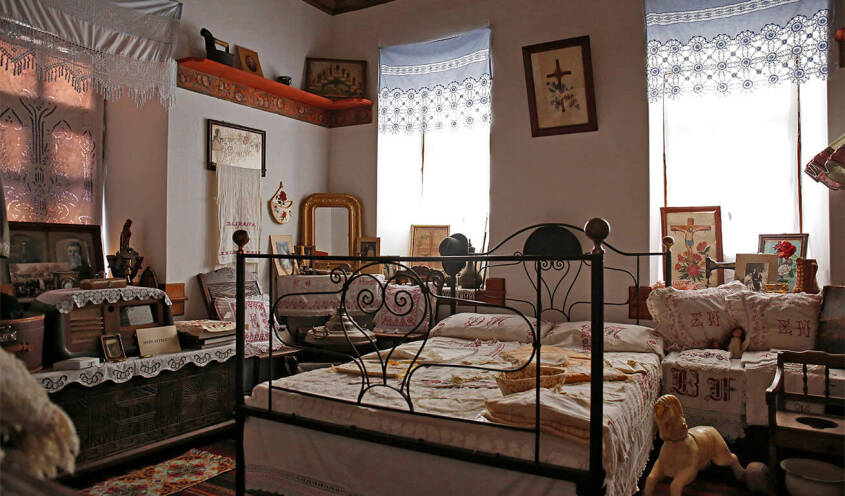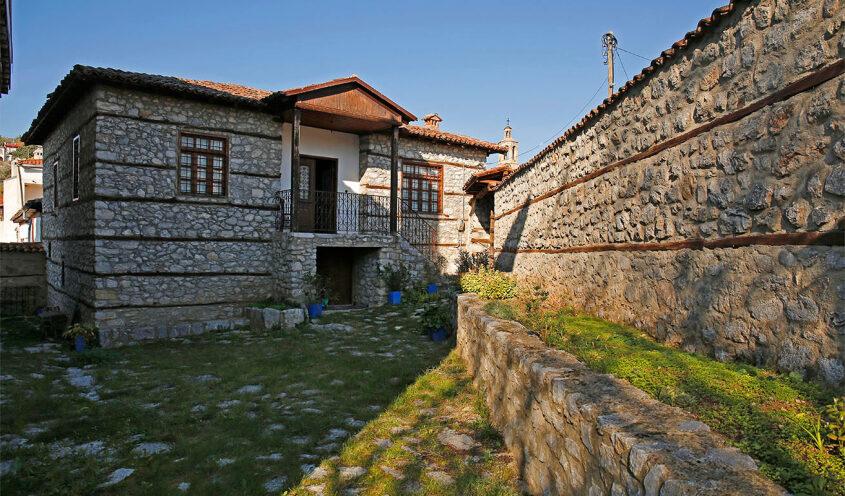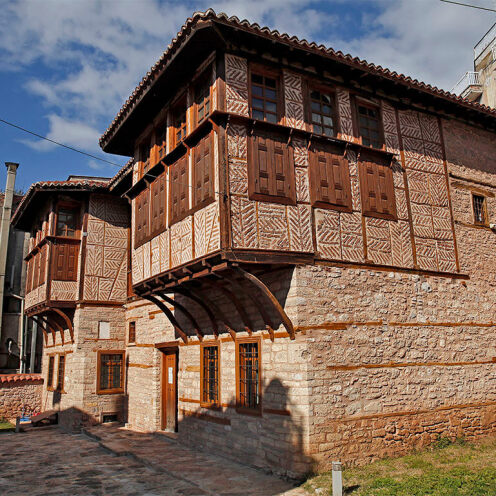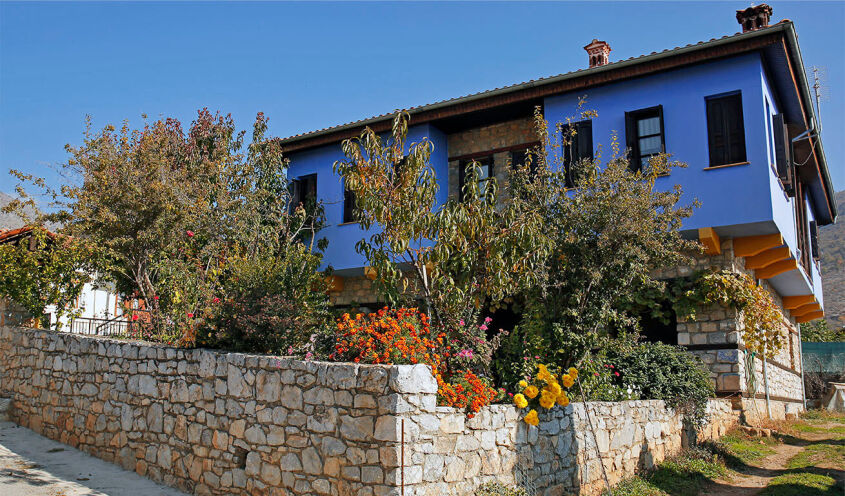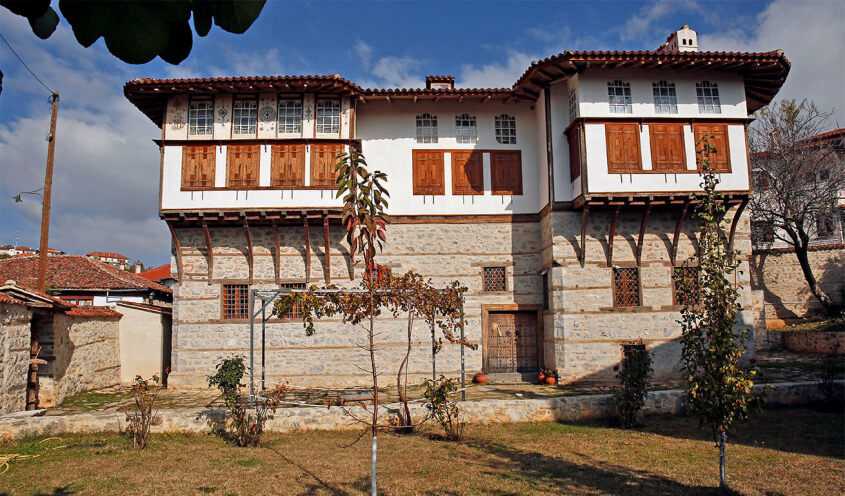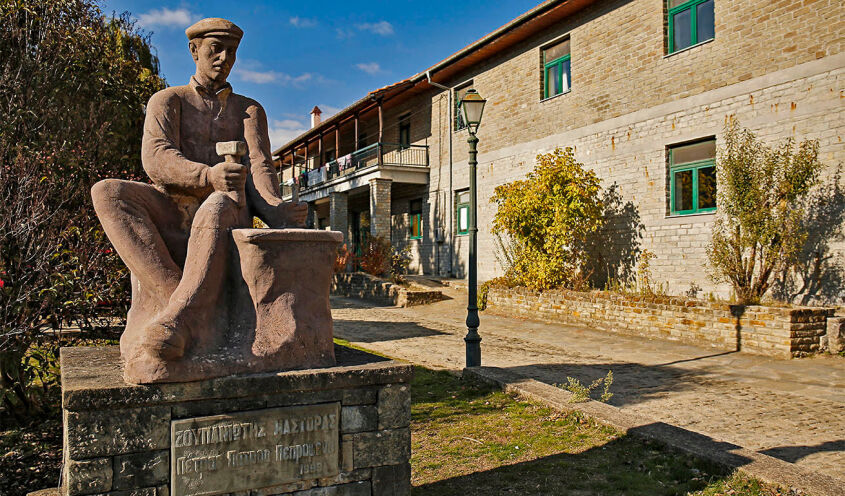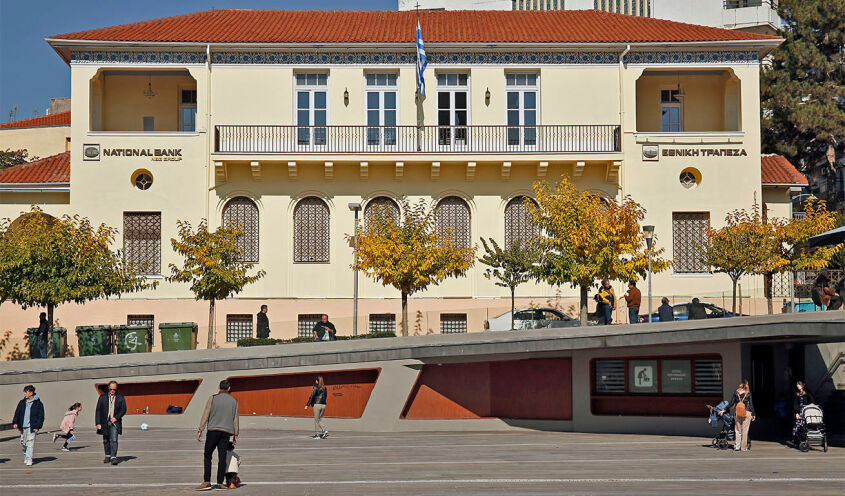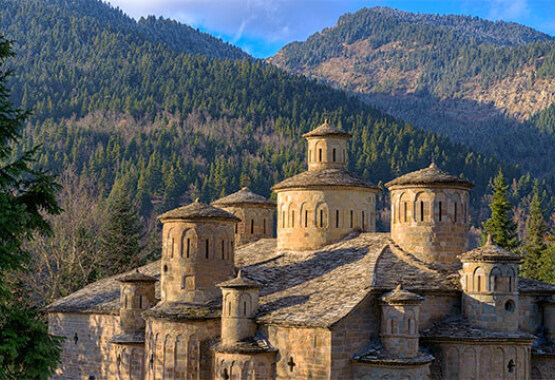Traditional Villages and Buildings of Kozani
The historic houses in Western Macedonia
The location of Kozani, at the crossroads of Thessaly, Epirus and Macedonia and on the commercial land routes to the Central and Eastern Europe, as well as the reputed business acumen of its inhabitants, resulted in a great accumulation of wealth in the area, as shown, among other things, by the splendid private and public buildings.
Siatista, a beautiful town of more than 5,000 inhabitants on the south side of Mt. Siniatsiko, on a 900-metre-elevation, is renowned for its historic houses, most of which were built in the 18th and 19th centuries at the behest of wealthy merchants. About thirty of them have survived, tattered by time, while some of them are still inhabited. The most interesting one is the visitable House of Poulko (by Eleni Poulkidi), built in the mid-18th century in the Geraneia district. It now belongs to the Ministry of Culture, which has undertaken its renovation. Its exterior shape and the layout of the spaces generally follow the local style while the richly painted decorations on the interior walls and ceilings are truly impressive. Another historic house that can be visited is located in the Chora district; the Malioga or Argyriadis House, also built in the mid-18th century, is a typical example of Macedonian architecture. Next to it, and dated to the same period, the Neratzopoulos House can only be admired from the outside. The nearby Manousi-Douka Tzatza House is also impressive in terms of its size and richness of decoration. It is currently undergoing restoration and is expected to open for visitors after 2023. Wall paintings with themes from the Greek Mythology adorn the Pantheon, the winter room of the Chatzimichail-Kanatsoulis House, perhaps the most beautiful house in Siatista, which is, nonetheless, not open to visitors.
A visit to the Traditional House (Folk Art Museum) of Tatiana Derou and Christos Tsiotsios, in Geraneia district, is a must before you leave Siatista. It is located in a building which used to be part of the Poulko Historic House, and it was probably used as staff quarters. The owners have renovated the site, where over 4,000 exhibits are on display, dated to the 18th, 19th, and early 20th century, that showcase aspects of the locals’ daily life at the time.
Vlasti, or Blatsi to the seniors, built on a plateau between Mt. Askio and Mt. Mouriki, on a 1,200-metre elevation, used to be a prosperous small town that wielded enormous influence in the area. Despite the significant reduction of its population and the damage it suffered from invaders and conquerors, Vlasti still retains its grandeur with several two-storey stone buildings adorning its streets. At the foot of Mt. Askio, Eratyra, too, has many grand houses, as well as smaller residences, built and painted according to the local style.
The villages of Pentalofos and neighbouring Vythos are almost entirely built of stone and are excellent examples of the local craftsmanship that was renowned throughout Macedonia and far beyond. The masons from Zoupani - the old name of Pentalofos - have left their mark on churches, bridges and on many imposing buildings.
Velventos is a town with many traditional houses built around the historic centre and its alleys, as well as many old churches, and it is definitely worth visiting.
Kozani town, despite its modern look, has many beautiful stone buildings, mainly around its centre, dating back to the 18th, 19th and early 20th century. They are located within a one kilometre walking distance from the main square, with the town clock serving as a top landmark. These buildings include the two-storey stone-built Grig. Vourka House, a typical example of urban Macedonian architecture of the 18th century, with protruding enclosed balconies, (sahnisi) and an adobe floor. The Lassani House was built in a similar architectural style, but it is smaller in size, and it houses the municipal Map Library. Other impressive structures are the imposing stone building of the Valtadorio High School, constructed in 1899, still used as one; the neoclassical building that houses the National Bank of Greece on the main square; and the interwar period building of the Hotel Ermionion, designed by Max Rubens.
